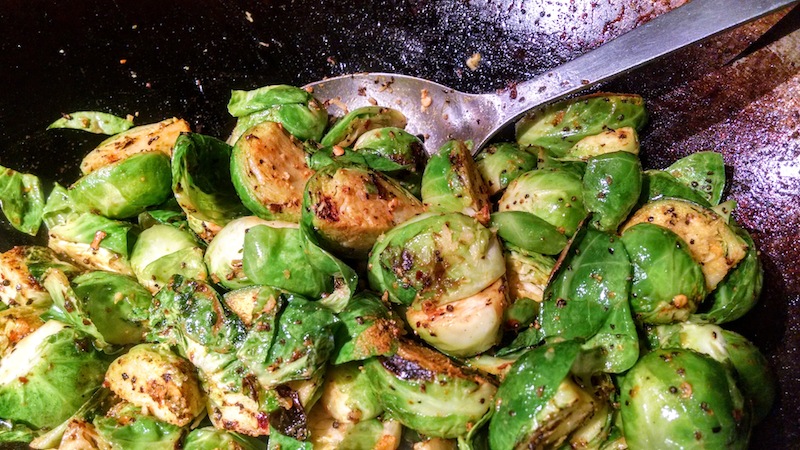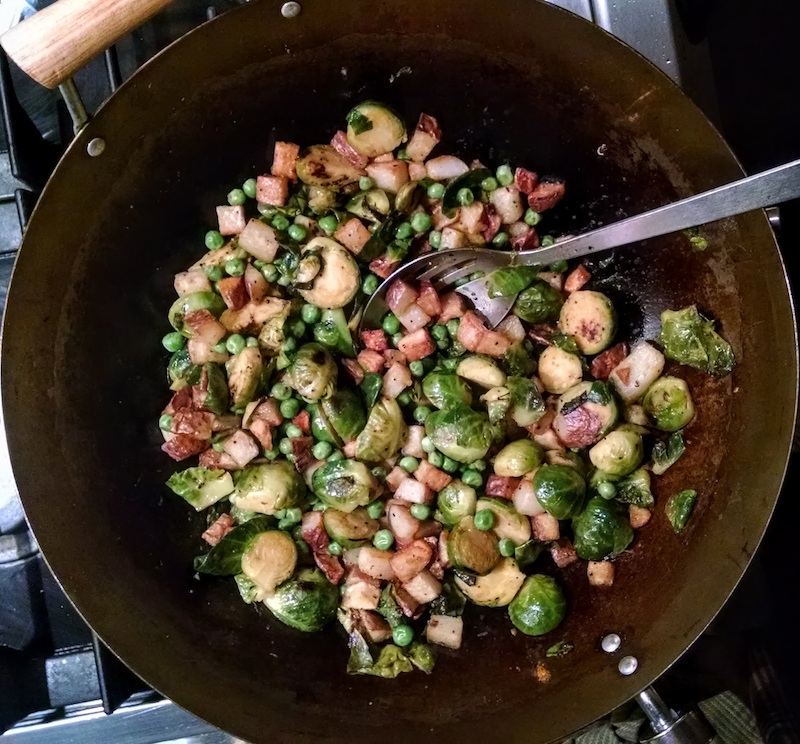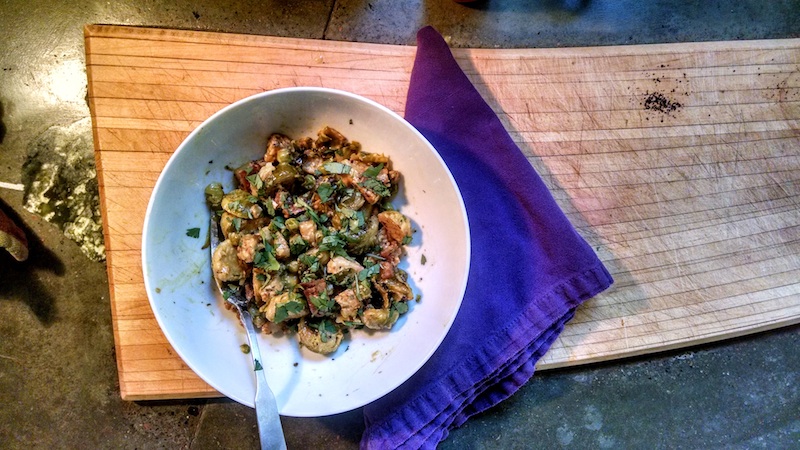“The three kinds of faith express themselves in habits of those who hold them: in the food they like, the work they do, the disciplines they practice, the gifts they give. Listen, and I will describe their different ways.” – The Bhagavad Gita, intro. and transl. by Eknath Easwaran, Nilgiri Press, 1985/2008.
Devotees of Krishna (as well as many, many modern yogis) follow a prescriptive diet (though it can also be called proscriptive), based on ayurvedic principles. The theory of the gunas postulates three modes of mind/body energy and qualities of things: sattva, rajas, and tamas which correspond roughly with balance, passion and heaviness. Thus, three main categories of food are said to have specific effects on the body as well as to influence the mind in subtle and not-so-subtle ways. A Krishna kitchen aims to achieve a sattvic diet with foods that are light, pure, sweet and easily digested. Milk, nuts, cooling herbs, vegetables and fruit fall into this category. Rajasic foods (as you might imagine) consist of spicy, sour, pungent, acidic or generally “stimulating” foods. In the tamasic category fall foods that are heavy or dulling to the senses. Stale, over or under-ripe foods, fermented, reheated, canned foods and meats fall into this category.
In the summer of 2008, as part of my Yoga Teacher Training course my colleagues and I were treated to a foodways lesson in Ayurvedic or Krishna-based vegetarian cooking by Manjuoli, one of the chefs from our legendary Krishna temple and restaurant, Kalachandji’s. Two things I remember most about that lesson: 1. You’ll notice many similarities between traditional Indian cuisines you’re probably familiar with and Krishna cuisine, as well as some marked differences. While intrinsic to Indian cuisines, garlic is not used in Krishna cuisine because it is rajasic or “passionate” and thus cannot be offered to Lord Krishna. 2. Cilantro stems pack just as much flavor as the leaves. Chop it all up when it’s called for. Why waste flavor?
This dish is one of three or four she cooked for us one Saturday afternoon.
Creamed Brussels Sprouts, Potatoes and Peas (adapted from Kalachandji’s)
- 2 large potatoes, peeled and cut into 1/2” cubes
- 1 c frozen green peas
- 3 c Brussels sprouts, quartered (you can also substitute cauliflower or broccoli)
- A few curry leaves*
- 2 T ghee**
- ½ t hing***
- ½ t grated fresh ginger
- ½ t turmeric
- ¼ t cayenne pepper
- 1 t salt
- 1 t black pepper
- 1 c sour cream (or plain yogurt, non-fat if you prefer)
- ¼ c cilantro, finely chopped
- oil or ghee for deep frying

- Heat enough oil or ghee in a wok or deep frying pan to fry the potatoes until they are golden brown and a little crisp. Drain on paper towels and set aside. Clear the leftover oil from your pan and heat the 2T of ghee.
- Add the curry leaves, hing and Brussels sprouts and stir-fry or saute for 3-4 minutes. Add the ginger, turmeric, cayenne pepper, salt and black pepper. Mix well and add ½ c water. Cover and cook until the Brussels sprouts are tender.
- Add the peas, potatoes, cilantro and mix well, and then add the sour cream or yogurt. If it all seems a bit dry, add a little bit of water. Serve it immediately.

*Curry leaves can be found in Indian markets or stores. Use fresh or frozen (not dried). Used (and looks somewhat) like a bay leaf for seasoning, but much more aromatic. This is a defining aroma of Indian cooking for me.
**Ghee is clarified butter. You can make your own, find it in Indian markets or stores, or Whole Foods. Becoming an increasingly mainstream alternative fat for cooking.
***Hing is also known as asafoetida. You can find it ground in Indian and some Middle Eastern markets or stores. It is a flavor enhancer, and has a taste of very mild onions or leeks.

